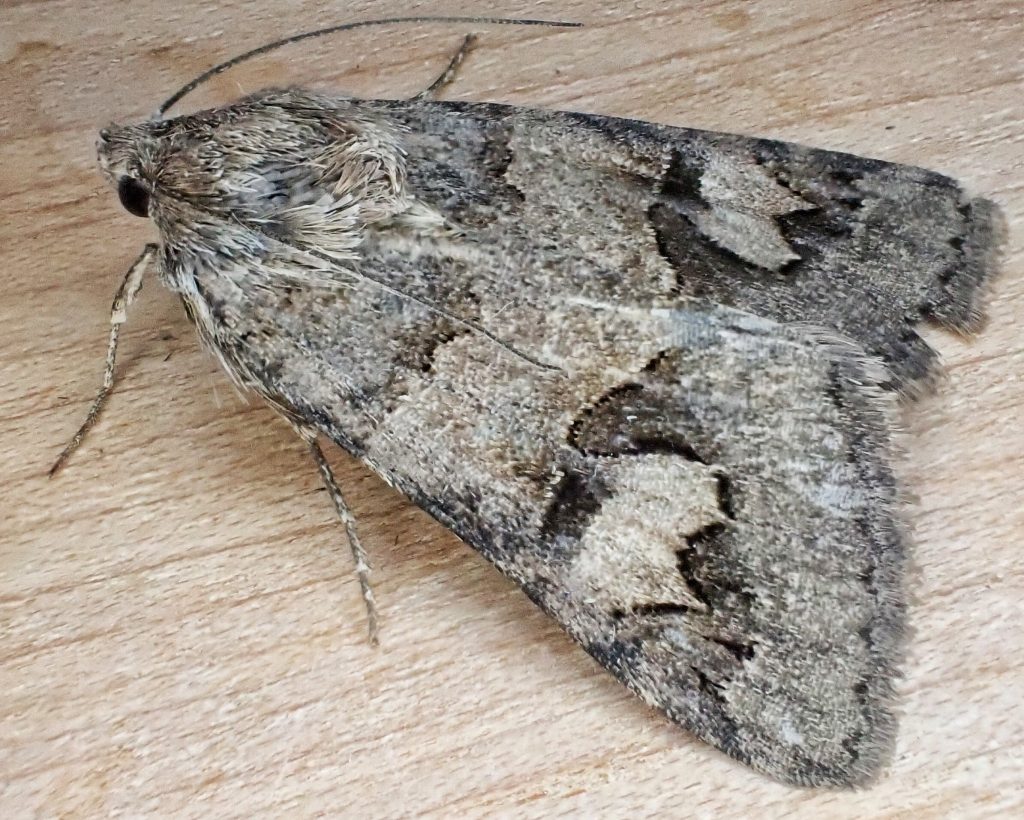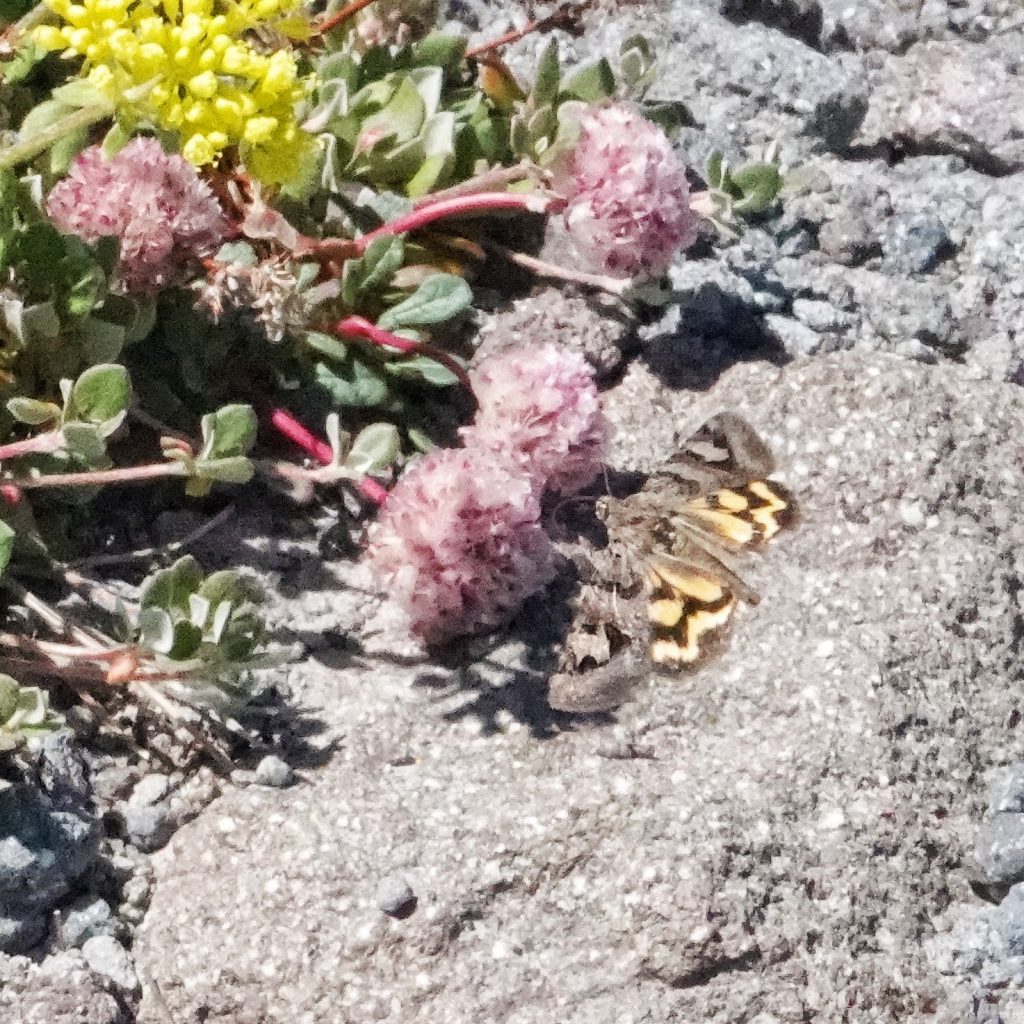
It is always a joy to find Drasteria adumbrata (shadowy arches moths), with their interesting forewings and reniform spots that make me think of the stylized drawings of buffalo that indigenous people created, and their bright hindwings, with that exciting flash of yellow orange when they launch (a trait thought to have evolved because of its ability to startle a predator for long enough for the moth to escape). Though I had seen these moths a number of times before they had mostly been perched on the ground or had come to UV lights at night, and had always perched with their hindwings mostly hidden. Before my trip to Mt. Hood I had never seen these members of the family Erebidae (tiger moths) actively nectaring, and it was interesting to note how often they exposed their hindwings while doing so, although it actually somewhat added to their camouflage because the base color of the hindwings was not that far from the bright color of the blooms of the sulphur buckwheat where I mostly found them.
As I mentioned in the blog ‘Happy Moth Week!’ I’ll be mothing every night for awhile, and this is the first of at least 10 straight days of profiling moths. Hope you all enjoy it as much as I will!
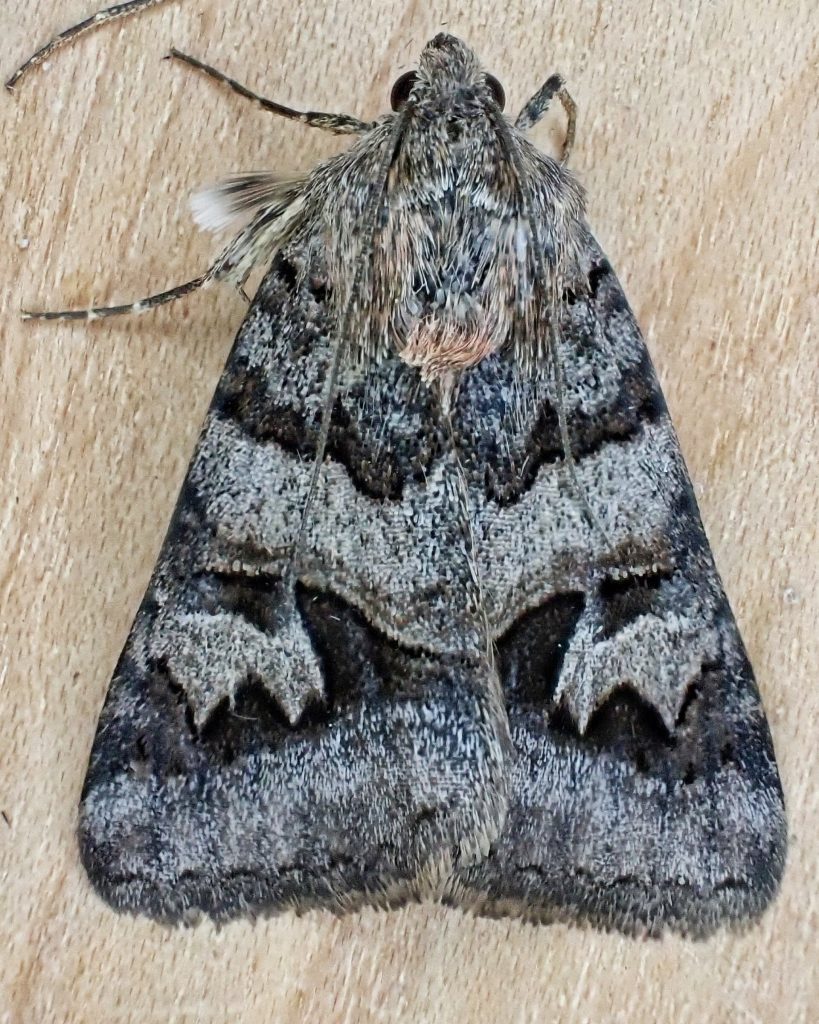
Description– “Wingspan about 32mm…Adult: forewing mottled light and dark brown; basal area, median band, reniform spot, and subterminal area paler; AM line curves toward base near inner margin; hindwing creamy yellow to orange with black marginal and PM bands, the latter joined to black discal crescent.” Species Drasteria adumbrata – Shadowy Arches – Hodges#8636 – BugGuide.Net
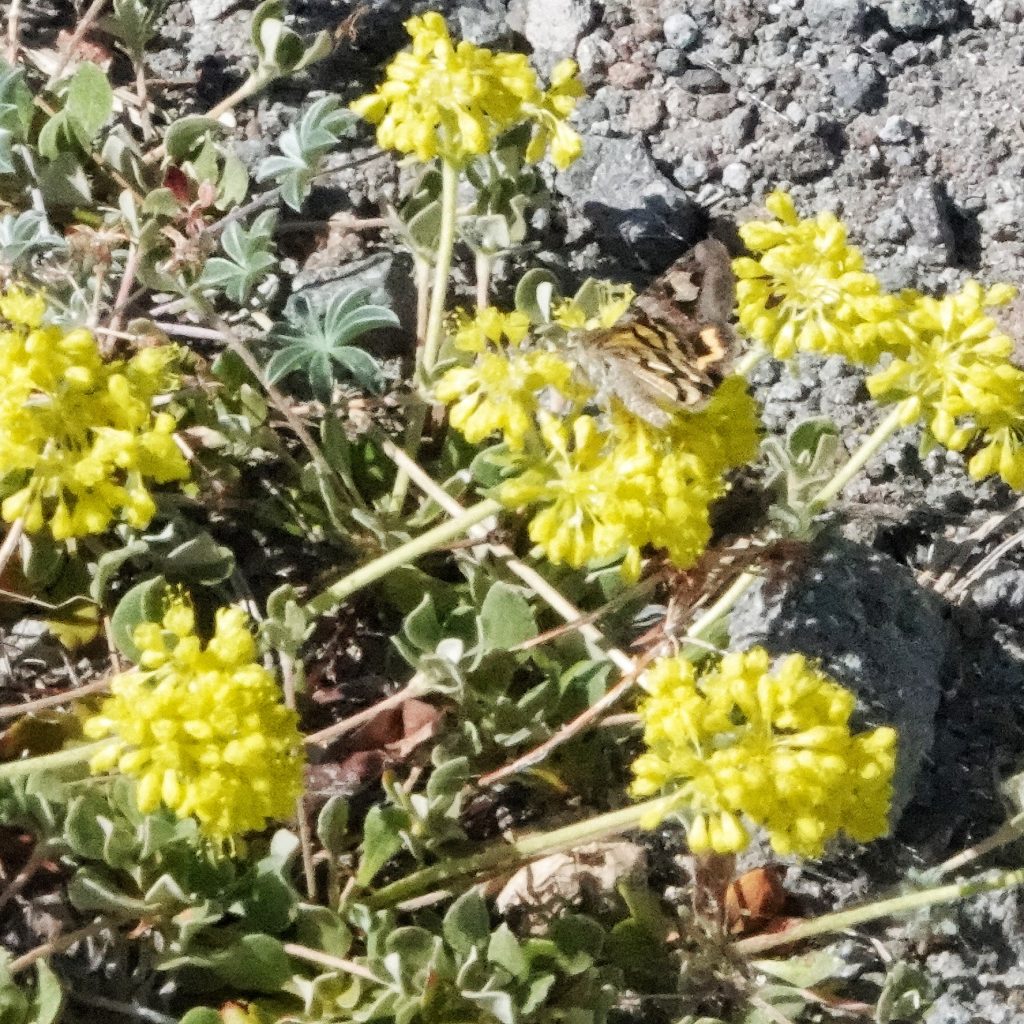
Similar species– “This species is most similar to Drasteria divergens in color and pattern but is usually smaller and lacks the white scaling along the veins distal to the inferior reniform spot that is present in that species. It occurs with Drasteria hudsonica in the northern portion of the Pacific Northwest. This species is similar in size but is more gray than D. adumbrata, has a whitish area between the reniform and postmedial line, brown in D. adumbrata, and usually has a contrasting light gray and red-brown median area, light gray-brown with or without a red-brown line in D. adumbrata.” PNW Moths | Drasteria adumbrata
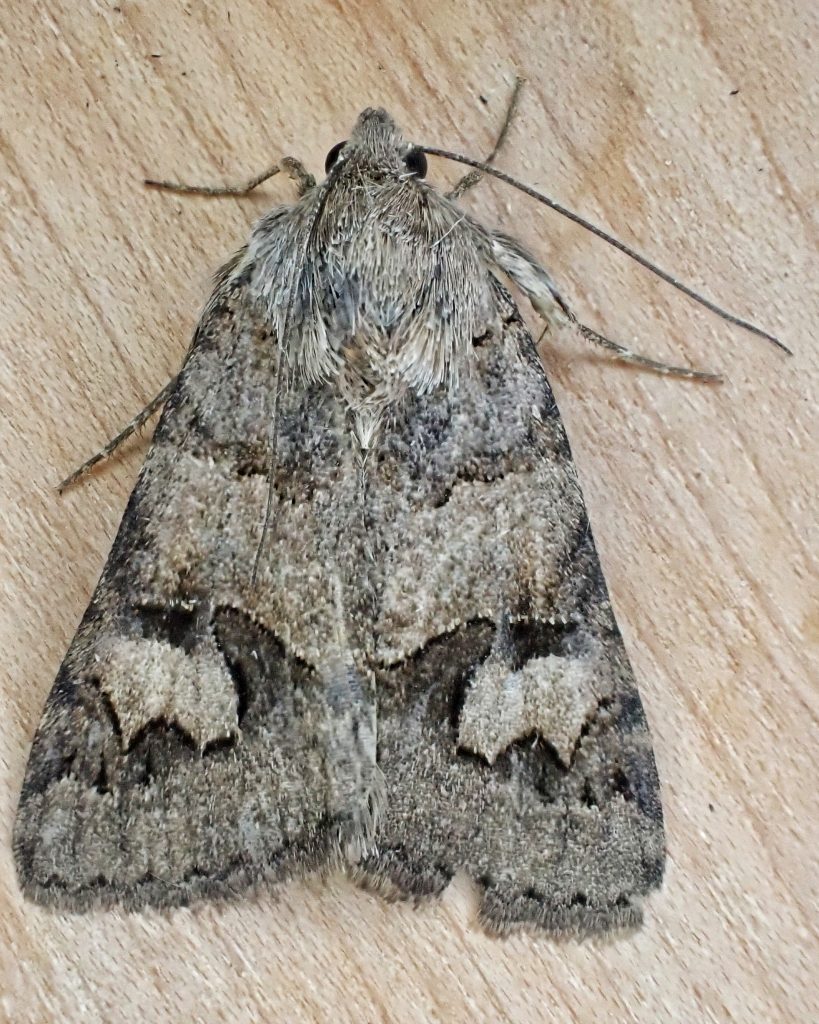
Habitat– “This species is common to abundant in higher elevation mountain habitats throughout much of western North America. Habitats include both open coniferous forests and open meadows in both the Cascades and Rocky Mountains.” PNW Moths | Drasteria adumbrata; “dry montane woodlands and sandy open woods; a rapid-flying, day-active species…”Species Drasteria adumbrata – Shadowy Arches – Hodges#8636 – BugGuide.Net
Range– “…coast to coast in southern Canada, south in the west to California and Colorado, south in the east to New England and Michigan.” Species Drasteria adumbrata – Shadowy Arches – Hodges#8636 – BugGuide.Net
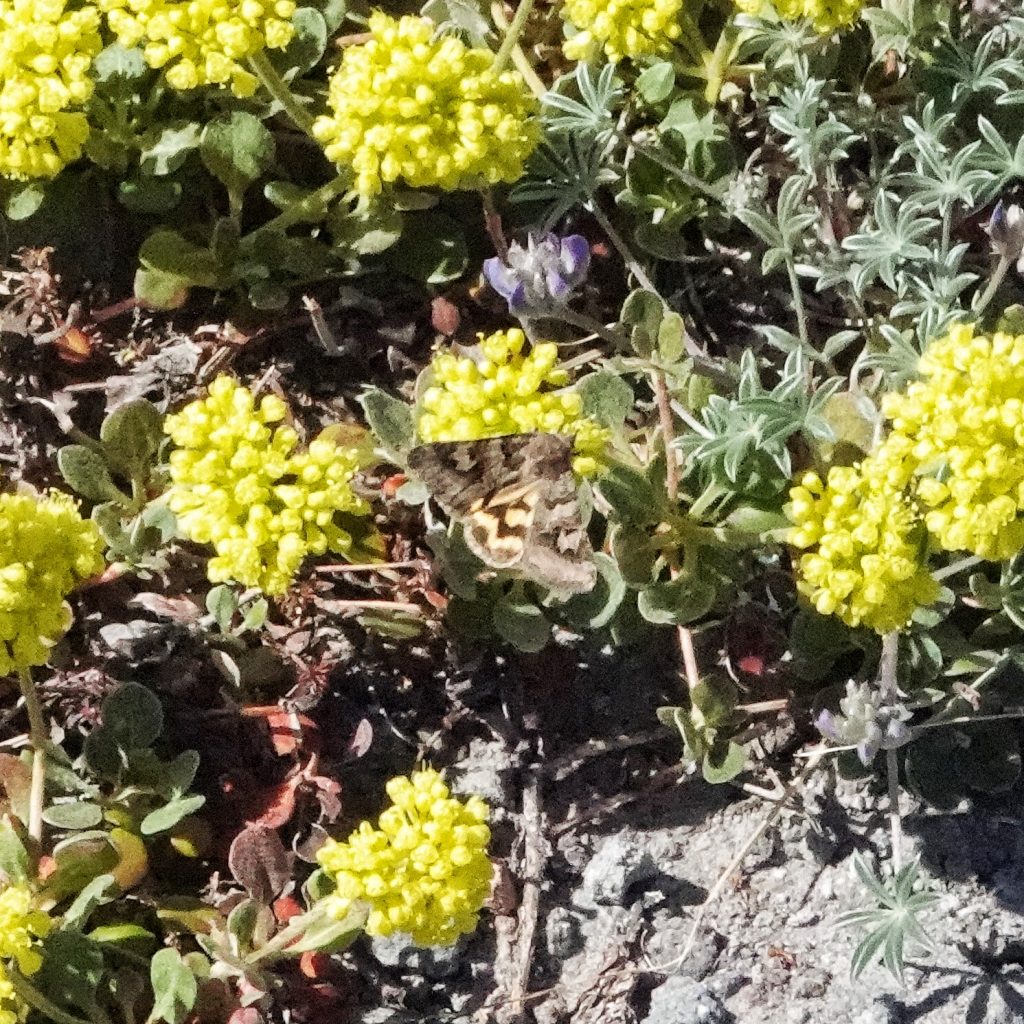
Eats– “Larvae feed on Lowbush Blueberry (Vaccinium angustifolium) in Quebec (Handfield 1999). Although V. angustifolium does not occur in Alberta, other Vaccinium species are likely used. A population at Dilberry Lake Provincial Park in east-central Alberta is associated with Bearberry (Arctostaphylus uva-ursi).” Drasteria adumbrata – University of Alberta Museums Search Site; I couldn’t find any information on their nectar preferences, but they sure seemed to love the Eriogonum umbellatum.
Eaten by– Presumably a host for parasitoids in Hymenoptera and Diptera, and probably preyed upon by insectivores of all classes, but I can find nothing specific for this species; I did see a number of tachinid flies and ichneumonid wasps perched on or near the sulphur buckwheat that it was mostly visiting.
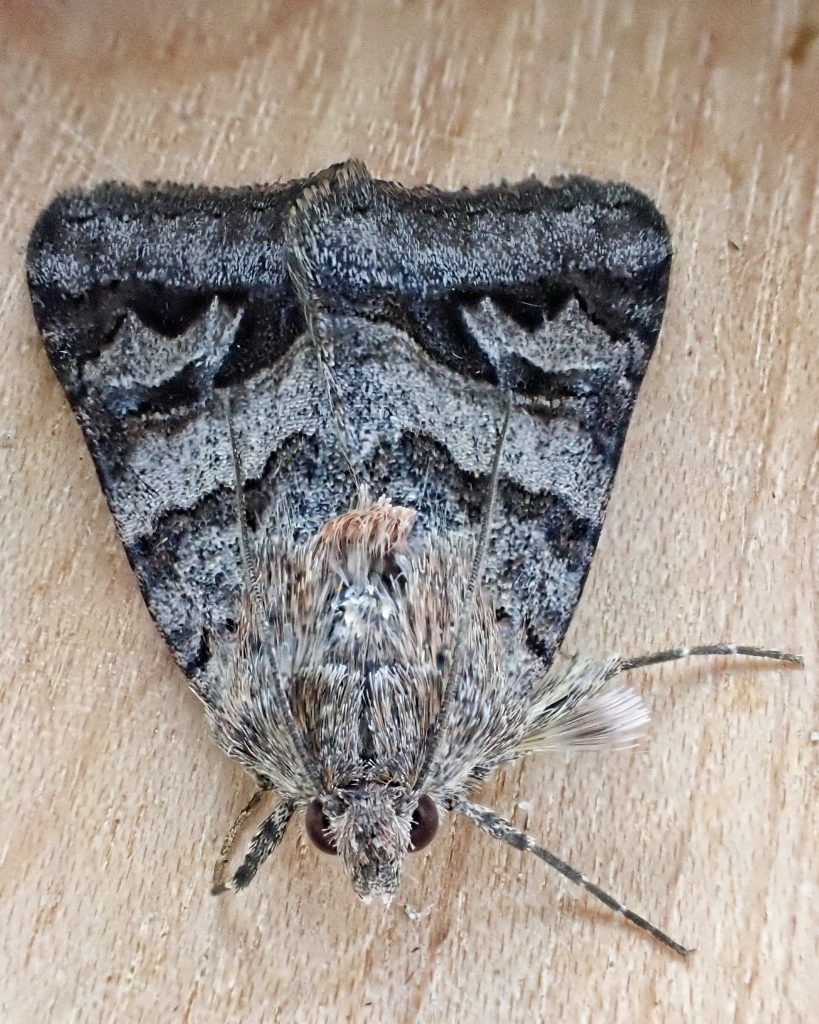
Adults active-Both nocturnal and diurnal; flies from late May to early August.
Life cycle– Based on the timing of adult flights it seems likely that this species is univoltine, and overwinters as late instar larva in diapause, but I can find nothing to confirm this.
Etymology of names– Drasteria is possibly from the Greek word for ‘servant/worker’, although I cannot ascertain what that references. The specific epithet adumbrata is from the Latin words for ‘near shadow’, which probably refers to the dark forewing, which is also the origin of the common name shadowy arches.
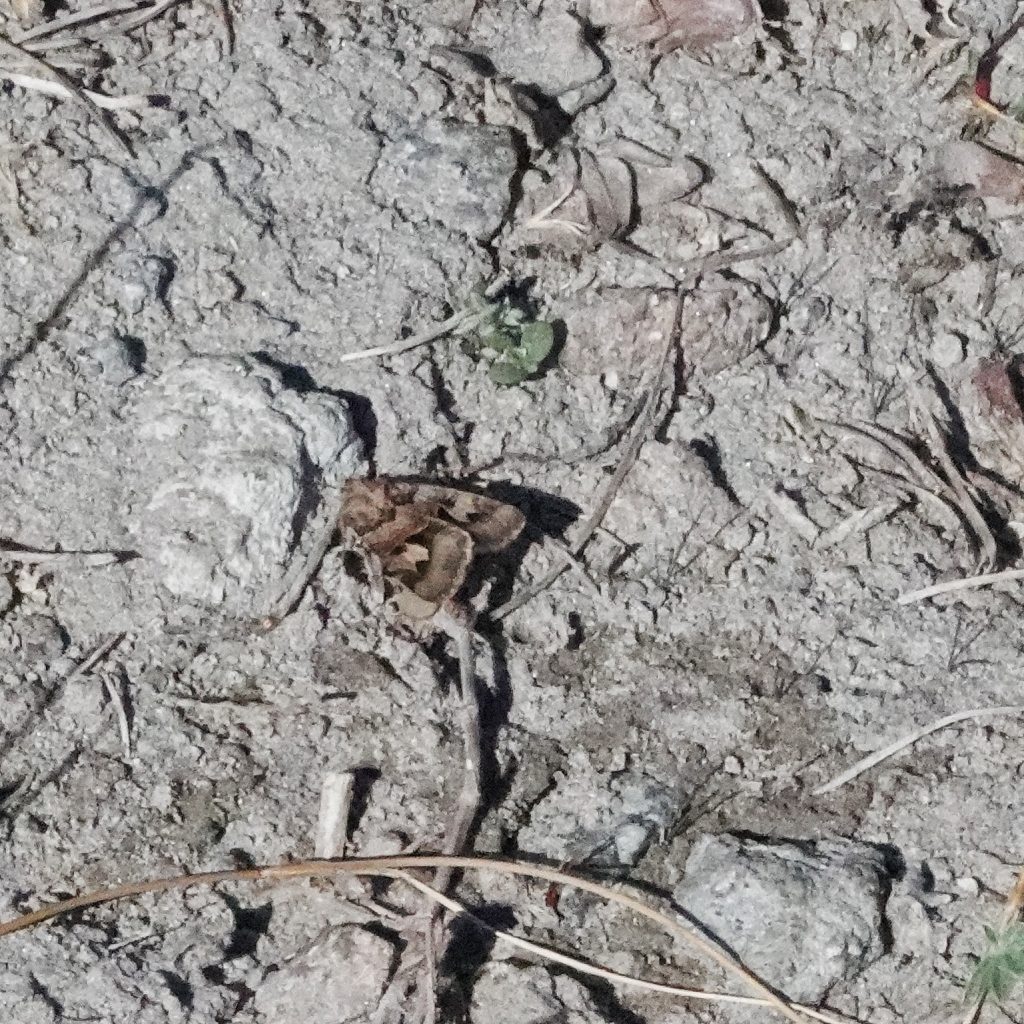
PNW Moths | Drasteria adumbrata
Species Drasteria adumbrata – Shadowy Arches – Hodges#8636 – BugGuide.Net
Drasteria adumbrata – University of Alberta Museums Search Site
http://mothphotographersgroup.msstate.edu/species.php?hodges=8636
